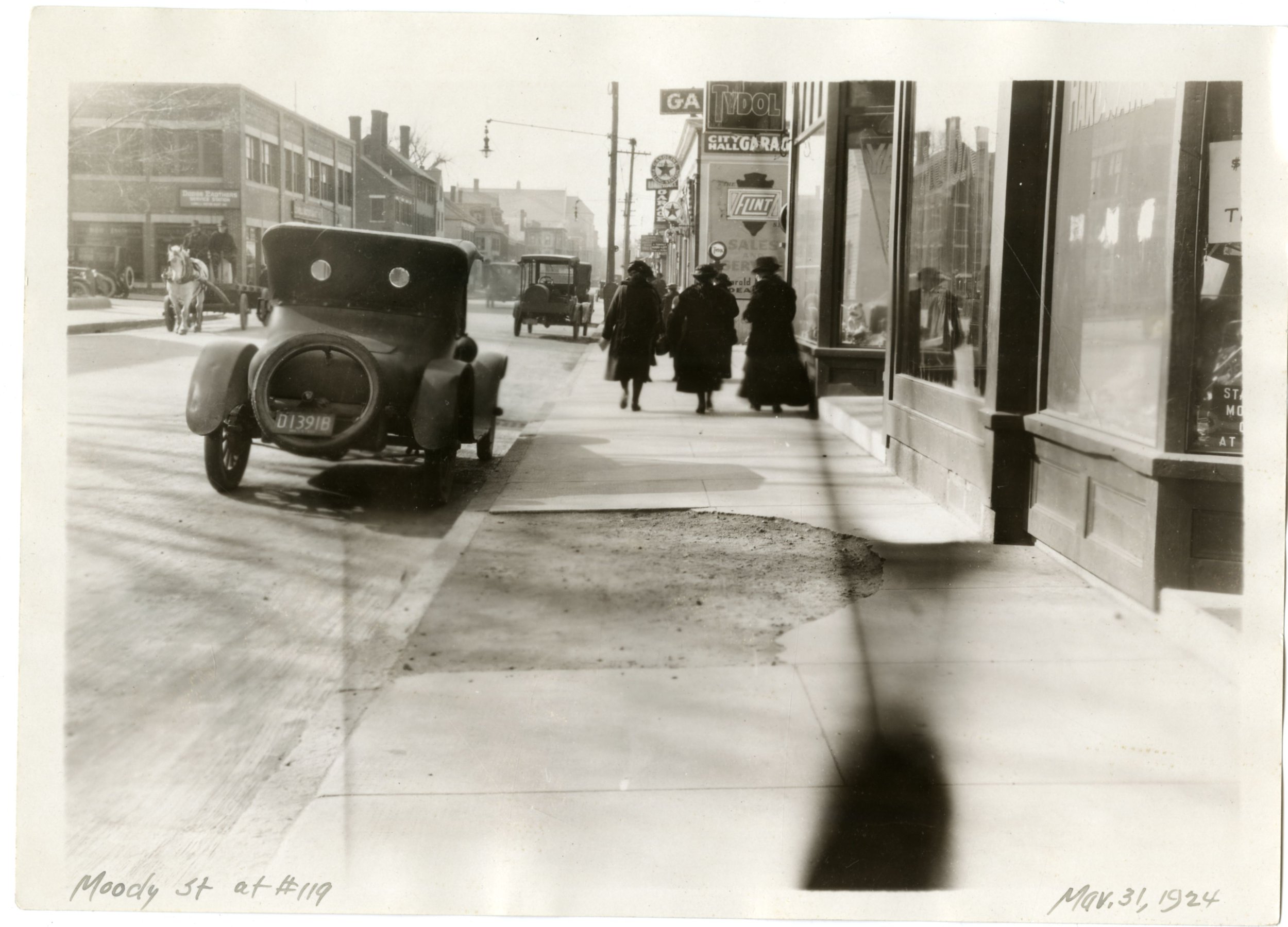To celebrate Annie’s work in and around Lowell, we’ve launched the 100 Posters Project. We are currently in the process of distributing 100 posters to local businesses, nonprofits and government agencies that now occupy buildings or have addresses on streets that Annie photographed one-hundred years ago. Our goal is to show how Lowell neighborhoods appeared in Annie’s time in relation to Lowell today.
A view of the negative of the image makes it easier to see the shadows Powell introduced by inserting white.
Library directory Bridget Cooley prepares to hang Poster 12.
This is the photographer’s reflection and not a “fourth” woman.
About the 100 Posters Project
Poster 12 of 100
Beyond the broken sidewalk
This century-old photo of the Moody St. side of Pollard Memorial Library captures a thriving shopping district now lost to urban renewal.
It’s a reminder that horses once shared the street with cars; cars from some from now-forgotten manufacturers.
And more than most photos attributed to Annie Powell, it reveals the photographer, figuratively and literally.
Lowell City Engineers would have asked Annie to document the broken sidewalk in front of 119 Moody St. But if only to please herself, in looking at the image it seems to me she worked hard to produce art.
In the early 1970s, this block was cleared for the JFK Civic Center and a fire station. But in 1924, other than a laundry and candy store, it was automotive row. There were shops for repairs, batteries, car parts, Harley-Davidson motorcycles, Paige luxury cars from Detroit, Dort cars from Flint, MI, and Moon cars from St. Louis. The car closest to us appears to be a 1924 Moon 6/50 Five-Passenger Touring car, likely for sale by the Moon Auto Co., 115 Moody St. The showroom was just behind the camera.
This image is part of the UMass Lowell's Center for Lowell History City Engineers collection. Powell took the original on a glass plate negative and skillfully introduced shadows and smoothed the sharpened the road, used sandpape or chemicals to make adjustments.
We believe that about three months earlier, Annie would have changed darkrooms, from the City Engineers darkroom at City Hall hall to her residential darkroom in the basement of her niece in Lowell Highlands. Possibly because they were running out of storage, it appears City Engineers asked her to copy the glass plate negatives to acetate and that is what survives in the collection.
In showing the negative version, see below, we can see the extent of her retouching, including a shadow blob throwing a thin line to the three walking women. This appears to be done for composition and focus. Other retouched shadows seem designed to prettify the streets. Another version of the rough sidewalk, a closeup, is utilitarian and shows none of these manual interventions.
In a number of the City Engineers photos, the reflection in the storefront glass shows a woman, sometimes with a camera, in a floppy or wide-brimmed hat. What appears to be a fourth woman at our right is in fact such a reflection, somewhat obscured by objects in the store. If you look carefully, you can see a shop dog in the window.
This poster hangs at the Colburn St. entrance to the Pollard Library. It faces the area where it was taken.






